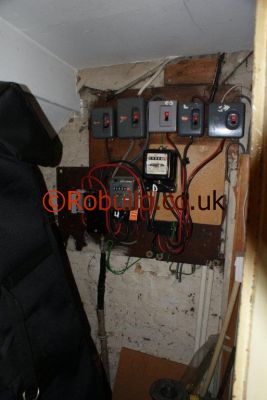Old electric meters includes a small disc which revolves a certain number of times for every kWh (kilowatt-hour) or unit of electricity consumed. The disc operates, in turn, numbered indicators to register the amount of current used. Some meters have digital dials that resemble the milometer of a car, and they are read in the same way. More common, however, is the clock-type meter with five separate dials, each of which supplies one digit for the reading.

The lower dial, which is red, shows fractions of a unit and is used only for test purposes. The left-hand dial registers tens of thousands, the next thousands, and so on to the right-hand dial, which registers single units. The numbers on the dials are arranged alternately clockwise and anticlockwise, and the pointers on the dials move accordingly.
When taking a reading, start with the left-hand dial and work across to the right of the meter. If a pointer is between two numbers, always take the lower number. If a pointer is directly over a number, the clue to a correct reading is provided by looking at the adjoining dial, as explained in the example on the right. To check your electricity bills, as you should periodically, make two consecutive readings and subtract the first from the second to calculate the consumption for the intervening period.
Take each reading on the day the official from the Electricity Board calls to make his own reading. Then compare your results with the figures on the second bill.
How can you check if your meter is working accurately?
The simplest way is by making use of the red dial, which measures 0.1 (or 1/10) of a unit. First, switch off a l l electrical equipment in the house and make sure that the rotating disc is stationary. Note the position of the pointer on the red dial and then switch on a load of 1 kW—for instance, of a 1 kW electric fire. If the meter is working accurately, the pointer should make one revolution—equivalent to one whole unit – in an hour.
